Month: May 2022
Thursday Poem
Say Thank You
When I wake each day in silence
and hear inside myself, “Oh, good morning,
good morning, darling,”
it’s life itself I greet, and me alive.
The day and I salute each other, not
promising anything; just saying
hello, just saying, I’m ready.
Words shake free of sleep
and call to the day, to
the sun that comes, to
the heart that beats, to
the body ready to accept itself.
I anthropomorphize the sunlight,
the turn of the planet, the machinery
of the universe. I throw forth
morning celebrations,
and prayers for the day,
for life has called my name again
and I’m responding to it.
Say joy, say life, say
breathe in and breathe out,
say thank you.
by Betty Lockwood
from The Matriarch’s Song
publisher: Peter Randall, Portsmouth, NH, 2001
What an Unprecedented Supreme Court Leak Says About the Future of Abortion—and About Precedent Itself
Jeannie Gersen in The New Yorker:
 The Court Chamber inside the Pantheon-like building of the Supreme Court of the United States is adorned with marble friezes depicting ancient lawgivers, including Hammurabi, Moses, and Confucius. To begin each session of the Court, at ten o’clock in the morning, the marshal strikes a gavel and commands, “All rise!” The audience goes silent and obeys. The nine Justices, in dark robes, then emerge from behind a heavy velvet curtain to take their seats on the elevated mahogany bench, as the marshal announces, “The Honorable, the Chief Justice and the Associate Justices of the Supreme Court of the United States. Oyez! Oyez! Oyez! All persons having business before the Honorable, the Supreme Court of the United States, are admonished to draw near and give their attention, for the Court is now sitting. God save the United States and this Honorable Court!” It is the closest thing we have, in the American civic sphere, to a papal audience.
The Court Chamber inside the Pantheon-like building of the Supreme Court of the United States is adorned with marble friezes depicting ancient lawgivers, including Hammurabi, Moses, and Confucius. To begin each session of the Court, at ten o’clock in the morning, the marshal strikes a gavel and commands, “All rise!” The audience goes silent and obeys. The nine Justices, in dark robes, then emerge from behind a heavy velvet curtain to take their seats on the elevated mahogany bench, as the marshal announces, “The Honorable, the Chief Justice and the Associate Justices of the Supreme Court of the United States. Oyez! Oyez! Oyez! All persons having business before the Honorable, the Supreme Court of the United States, are admonished to draw near and give their attention, for the Court is now sitting. God save the United States and this Honorable Court!” It is the closest thing we have, in the American civic sphere, to a papal audience.
The solemn ritual was supposed to have preceded the Supreme Court’s revelation from the bench of its decision in Dobbs v. Jackson Women’s Health Organization, the case about Mississippi’s ban on abortion after fifteen weeks of pregnancy. It still surely will, later this spring, but it will feel as if we’ve already been behind the curtain in Oz. On Monday, a leaked first-draft opinion by Justice Samuel Alito, writing for a majority, which was apparently circulated to all the Justices in February, was published by Politico. It states that the Court is overruling Roe v. Wade, which declared a constitutional right to an abortion, in 1973, and Planned Parenthood v. Casey, which reaffirmed Roe’s “central holding” under the Fourteenth Amendment’s due-process clause, in 1992.
The leak has launched abundant speculation about the leaker’s motives. Commentators have wondered whether leaking the draft was intended to corner a “squishy” conservative Justice into staying onboard with the majority or, alternatively, to create pressure to jump ship from the majority.
More here.
The case against the Supreme Court of the United States
Ian Millhiser in Vox:
 Two events occurred Monday night — one historic, the other rather insignificant — which placed an unflattering spotlight on the Supreme Court of the United States. The historic event was that Politico published an unprecedented leak of a draft majority opinion, by Justice Samuel Alito, which would overrule Roe v. Wade and permit state lawmakers to ban abortion in its entirety in the US. Alito’s draft opinion is not the Court’s final word on this case, Dobbs v. Jackson Women’s Health Organization, but the leaked opinion is the latest in a long list of signs that Roe may be in its final days. The other event that also occurred last night is that I sent two tweets. One praised whoever leaked Alito’s opinion for disrupting an institution that, as I have written about many times in many forums, including my first book, has historically been a malign force within the United States. And a second celebrated the leak for the distrust it might foster in such a malign institution.
Two events occurred Monday night — one historic, the other rather insignificant — which placed an unflattering spotlight on the Supreme Court of the United States. The historic event was that Politico published an unprecedented leak of a draft majority opinion, by Justice Samuel Alito, which would overrule Roe v. Wade and permit state lawmakers to ban abortion in its entirety in the US. Alito’s draft opinion is not the Court’s final word on this case, Dobbs v. Jackson Women’s Health Organization, but the leaked opinion is the latest in a long list of signs that Roe may be in its final days. The other event that also occurred last night is that I sent two tweets. One praised whoever leaked Alito’s opinion for disrupting an institution that, as I have written about many times in many forums, including my first book, has historically been a malign force within the United States. And a second celebrated the leak for the distrust it might foster in such a malign institution.
The former tweet was phrased provocatively, and it attracted some attention from those on the right, including Sen. Ted Cruz (R-TX). So let me clarify that I do not advocate arson as a solution to the Republican Party’s capture of the Supreme Court. I metaphorically compared the leak of Alito’s opinion to lighting the Court on fire because, as Chief Justice John Roberts noted in his statement on the leak, the Court has extraordinarily strong norms of confidentiality that it zealously protects. The fact that someone inside the Court’s very small circle of trust apparently decided to leak a draft opinion is likely to be perceived by the justices, as SCOTUSBlog tweeted out Monday night, as “the gravest, most unforgivable sin.”
More here.
On Lydia Lopokova
Susan Daitch at berfrois:
 Russian impresario, Sergei Diaghilev, trained his spyglass on modernism, plotless ballets of pure motion with cubist sets and minimal costumes, but he also knew box office when he saw it, and because his Ballets Russes was a touring company that never performed in the country for which it was named, he also presented fantastic ballets that audiences loved, happy to be cast under the spell of Scheherazade, the Firebird, Giselle. Diaghilev, always ready to go overboard, staged a version of The Sleeping Princess with huge trompe l’oeil sets and over three hundred costumes. Courtiers and princes wore jewelled plumed turbans, ladies of the court were dressed in ornate gowns with trains and capes and gold-buckled shoes. The evil Carabosse had bony arms that ended in claws, a long haphazardly leopard-spotted cloak, conical hat, and in silhouette, she looked like a rat. Critics called the productions a gorgeous calamity. In London, in 1921, it wasn’t Aurora, Keynes fell in love with, but the Lilac Fairy, the creature who put the kingdom to sleep, so as to delay the effects of the jilted fairy’s curse. The Lilac Fairy was danced by Lydia Lopokova, and when attendance fell off, he made sure to sit in empty box where she would notice him.
Russian impresario, Sergei Diaghilev, trained his spyglass on modernism, plotless ballets of pure motion with cubist sets and minimal costumes, but he also knew box office when he saw it, and because his Ballets Russes was a touring company that never performed in the country for which it was named, he also presented fantastic ballets that audiences loved, happy to be cast under the spell of Scheherazade, the Firebird, Giselle. Diaghilev, always ready to go overboard, staged a version of The Sleeping Princess with huge trompe l’oeil sets and over three hundred costumes. Courtiers and princes wore jewelled plumed turbans, ladies of the court were dressed in ornate gowns with trains and capes and gold-buckled shoes. The evil Carabosse had bony arms that ended in claws, a long haphazardly leopard-spotted cloak, conical hat, and in silhouette, she looked like a rat. Critics called the productions a gorgeous calamity. In London, in 1921, it wasn’t Aurora, Keynes fell in love with, but the Lilac Fairy, the creature who put the kingdom to sleep, so as to delay the effects of the jilted fairy’s curse. The Lilac Fairy was danced by Lydia Lopokova, and when attendance fell off, he made sure to sit in empty box where she would notice him.
more here.
Formalism and the Demon of Analogy: A Conversation with Rosalind Krauss
Abigail Susik and Rosalind Krauss at the LARB:
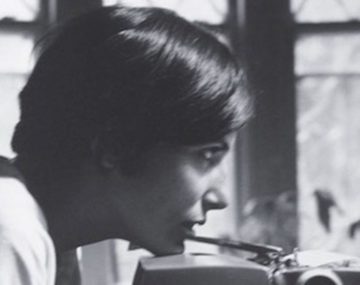 I have a story in my book about Greenberg that relates to this idea of charms and to formalism. In his book Sade, Fourier, Loyola (1971), Barthes talks about the style of a great writer as the writer’s “charm.” Once, after Greenberg had died, I was asked to be part of a panel at Harvard University in honor of the 80th anniversary of Greenberg’s birth. Heading to Boston on the train I thought, “I can’t be part of this panel celebrating Greenberg and trash him.” I had trashed him, for instance, in The Optical Unconscious — the last part about Jackson Pollock was meant to demolish Greenberg. So, I asked myself, what can I say about Greenberg at Harvard that won’t be hypocritical but will be positive? Then I thought about Barthes’s notion of charm.
I have a story in my book about Greenberg that relates to this idea of charms and to formalism. In his book Sade, Fourier, Loyola (1971), Barthes talks about the style of a great writer as the writer’s “charm.” Once, after Greenberg had died, I was asked to be part of a panel at Harvard University in honor of the 80th anniversary of Greenberg’s birth. Heading to Boston on the train I thought, “I can’t be part of this panel celebrating Greenberg and trash him.” I had trashed him, for instance, in The Optical Unconscious — the last part about Jackson Pollock was meant to demolish Greenberg. So, I asked myself, what can I say about Greenberg at Harvard that won’t be hypocritical but will be positive? Then I thought about Barthes’s notion of charm.
One of the charms of Greenberg’s writing was that he hated Latinate terms. He only wanted to write with Anglo-Saxon single-syllable words. One of these words was “stuff.” When he gave a lecture called “After Abstract Expressionism” at the Guggenheim in the ’60s, at a certain point he said that Pollock had “lost his stuff” in the late work, and the audience got very upset, of course.
more here.
Under the Cover: Rosalind E. Krauss
The economist who believes that human ingenuity will save the world
David Shariatmadari in The Guardian:
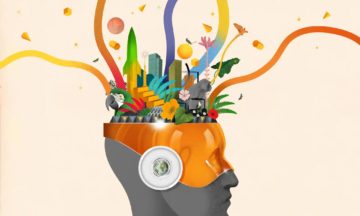 Why is the Anglo-Saxon world so individualistic, and why has China leaned towards collectivism? Was it Adam Smith, or the Bill of Rights; communism and Mao? According to at least one economist, there might be an altogether more surprising explanation: the difference between wheat and rice. You see, it’s fairly straightforward for a lone farmer to sow wheat in soil and live off the harvest. Rice is a different affair: it requires extensive irrigation, which means cooperation across parcels of land, even centralised planning. A place where wheat grows favours the entrepreneur; a place where rice grows favours the bureaucrat.
Why is the Anglo-Saxon world so individualistic, and why has China leaned towards collectivism? Was it Adam Smith, or the Bill of Rights; communism and Mao? According to at least one economist, there might be an altogether more surprising explanation: the difference between wheat and rice. You see, it’s fairly straightforward for a lone farmer to sow wheat in soil and live off the harvest. Rice is a different affair: it requires extensive irrigation, which means cooperation across parcels of land, even centralised planning. A place where wheat grows favours the entrepreneur; a place where rice grows favours the bureaucrat.
The influence of the “initial conditions” that shape societies’ development is what Oded Galor has been interested in for the past 40 years. He believes they reverberate across millennia and even seep into what we might think of as our personalities. Whether or not you have a “future-oriented mindset” – in other words, how much money you save and how likely you are to invest in your education – can, he argues, be partly traced to what kinds of crops grew well in your ancestral homelands.
More here.
Sean Carroll’s Mindscape Podcast: Richard Dawkins on Flight and Other Evolutionary Achievements
Sean Carroll in Preposterous Universe:
 Evolution has equipped species with a variety of ways to travel through the air — flapping, gliding, floating, not to mention jumping really high. But it hasn’t invented jet engines. What are the different ways that heavier-than-air objects might be made to fly, and why does natural selection produce some of them but not others? Richard Dawkins has a new book on the subject, Flights of Fancy: Defying Gravity by Design and Evolution. We take the opportunity to talk about other central issues in evolution: levels of selection, the extended phenotype, the role of adaptation, and how genes relate to organisms.
Evolution has equipped species with a variety of ways to travel through the air — flapping, gliding, floating, not to mention jumping really high. But it hasn’t invented jet engines. What are the different ways that heavier-than-air objects might be made to fly, and why does natural selection produce some of them but not others? Richard Dawkins has a new book on the subject, Flights of Fancy: Defying Gravity by Design and Evolution. We take the opportunity to talk about other central issues in evolution: levels of selection, the extended phenotype, the role of adaptation, and how genes relate to organisms.
More here.
How to Use (or Not Use) a Hyphen
Mary Norris in The New Yorker:
 Among the many books about punctuation, precious few are devoted to a single mark. There’s “On the Dot,” by the Brothers Humez, which celebrates the period, or full stop; “Semicolon,” a thoughtful treatise by Cecelia Watson; and “Fucking Apostrophes,” a jewel of a book by Simon Griffin. The hyphen, which may not technically qualify as a punctuation mark, because it operates at the level of the word rather than the sentence—it doesn’t make you pause (though it may give you pause)—has inspired not one great book but two: “Meet Mr. Hyphen (And Put Him in His Place),” a classic by Edward N. Teall, published in 1937, and “Hyphen,” by Pardis Mahdavi, which came out in 2021.
Among the many books about punctuation, precious few are devoted to a single mark. There’s “On the Dot,” by the Brothers Humez, which celebrates the period, or full stop; “Semicolon,” a thoughtful treatise by Cecelia Watson; and “Fucking Apostrophes,” a jewel of a book by Simon Griffin. The hyphen, which may not technically qualify as a punctuation mark, because it operates at the level of the word rather than the sentence—it doesn’t make you pause (though it may give you pause)—has inspired not one great book but two: “Meet Mr. Hyphen (And Put Him in His Place),” a classic by Edward N. Teall, published in 1937, and “Hyphen,” by Pardis Mahdavi, which came out in 2021.
More here.
Religion gives life meaning. Can anything else take its place?
Michael M Prinzing in Psyche:
 Theologians sometimes argue that, without the existence of God, life would be meaningless. Some secular people agree. For instance, in his book An Atheist’s Guide to Reality (2011), the philosopher Alex Rosenberg claims that, because the observable physical universe is all that exists, human life is meaningless. Whether you accept this philosophical claim or not, the fact that many people seem to believe that God or other supernatural entities are necessary for life to be meaningful suggests that, psychologically, there is some important connection between religious faith and the sense of meaning in life.
Theologians sometimes argue that, without the existence of God, life would be meaningless. Some secular people agree. For instance, in his book An Atheist’s Guide to Reality (2011), the philosopher Alex Rosenberg claims that, because the observable physical universe is all that exists, human life is meaningless. Whether you accept this philosophical claim or not, the fact that many people seem to believe that God or other supernatural entities are necessary for life to be meaningful suggests that, psychologically, there is some important connection between religious faith and the sense of meaning in life.
Although psychologists are divided on exactly how to define perceived meaning in life – some suggest it is about making sense of one’s life, others that it’s about seeing value and significance in it – they often assess meaning in life simply by asking how strongly people agree with statements such as: ‘At present, I find my life very meaningful.’ And research has consistently supported the idea that perceived meaning in life is tightly linked with religion.
More here.
André Cadere’s Itinerant Art
Bruce Hainley at Artforum:
 The incompatibility of his enterprise: as he brought one of his homemade object-acts, uninvited, into a gallery or museum opening, gently leaned it against a wall or gently dropped it on the floor, amid the other artists’ works on view, only to be jettisoned, exiled, often, more often than not, artist and stick, abruptly from the proceedings; or purposefully yet leisurely walked with a stick down the street or into a conference; or nestled it in a pastry shop window, something strange and sweet amid the sweets; or let it vogue in Le Grand Chic Parisien, oblique or (even) obtuse to the 1930s fashions, objets, and jewels; tapped it like a kind of herald to conversation in a pub; or slanted it against the fence while guys enjoyed a pickup game of hoops on the other side. He was, wasn’t he, fucking with the contingencies, regimented, rigged, of inside and outside, and of who decides what comes into focus when something uninvited or unacknowledged radiates its difference?
The incompatibility of his enterprise: as he brought one of his homemade object-acts, uninvited, into a gallery or museum opening, gently leaned it against a wall or gently dropped it on the floor, amid the other artists’ works on view, only to be jettisoned, exiled, often, more often than not, artist and stick, abruptly from the proceedings; or purposefully yet leisurely walked with a stick down the street or into a conference; or nestled it in a pastry shop window, something strange and sweet amid the sweets; or let it vogue in Le Grand Chic Parisien, oblique or (even) obtuse to the 1930s fashions, objets, and jewels; tapped it like a kind of herald to conversation in a pub; or slanted it against the fence while guys enjoyed a pickup game of hoops on the other side. He was, wasn’t he, fucking with the contingencies, regimented, rigged, of inside and outside, and of who decides what comes into focus when something uninvited or unacknowledged radiates its difference?
more here.
Two New Books About Our Relationship To Song
Ellen Pierson-Hagger at The New Statesman:
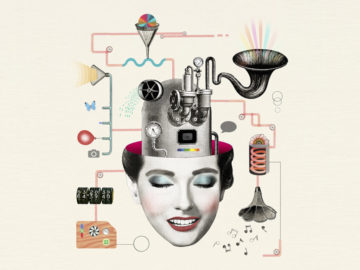 Music, Jude Rogers realises towards the end of her perceptive and moving book, The Sound of Being Human, is a “portal”. The term, borrowed from Nina Kraus, an academic who studies the biology of auditory learning, has a scientific meaning: a portal is the part of an organism where things enter and exit, often with transformative effects. Music does that too. “It is a grand, exhilarating entrance to something,” Rogers writes. It allows us to access and express our innermost feelings, and to communicate with others when alternative channels are unavailable.
Music, Jude Rogers realises towards the end of her perceptive and moving book, The Sound of Being Human, is a “portal”. The term, borrowed from Nina Kraus, an academic who studies the biology of auditory learning, has a scientific meaning: a portal is the part of an organism where things enter and exit, often with transformative effects. Music does that too. “It is a grand, exhilarating entrance to something,” Rogers writes. It allows us to access and express our innermost feelings, and to communicate with others when alternative channels are unavailable.
Music is also a portal to memory. Rogers opens with a story about her and her father that anchors the whole book. In 1984 Rogers, a music journalist and broadcaster, was five years old and growing up in south Wales. She remembers standing on the doormat of her family home on a cold January morning, saying goodbye to her father, who was going into hospital for an operation.
more here.
The Kate Bush Story
Wednesday Poem
Five A.M in the Pinewoods
I’d seen
their hoofprints in the deep
needles and knew
they ended the long night
under the pines, walking
like two mute
and beautiful women toward
the deeper woods, so I
got up in the dark and
went there. They came
slowly down the hill
and looked at me sitting under
the blue trees, shyly
they stepped
closer and stared
from under their thick lashes and even
nibbled some damp
tassels of weeds. This
is not a poem about a dream,
though it could be.
This is a poem about the world
that is ours, or could be.
Finally
one of them—I swear it!—
would have come to my arms.
But the other
stamped sharp hoof in the
pine needles like
the tap of sanity,
and they went off together through
the trees. When I woke I was alone,
I was thinking:
so this is how you swim inward,
so this is how you flow outward,
so this is how you pray.
Mary Oliver
from New and Selected Poems, Vol. 1
Beacon Press, 1992
Why the wheels of human history seemed to turn faster for some
James Kwak in The Washington Post:
These “wheels of change” have been the key drivers of technological progress since the beginning of time, economist Oded Galor argues in his new book, “The Journey of Humanity: The Origins of Wealth and Inequality.” Throughout most of our history, however, our species was caught in a poverty trap. Technological innovation caused increases in food production, which caused higher population growth — until the additional mouths to feed canceled out the productivity gains, bringing living standards back to subsistence levels. In the 19th century, however, the inexorable march of technology reached a tipping point. With the Industrial Revolution, according to Galor, the value of human capital reached the point that parents chose to have fewer children and invest more in their upbringing. Longer life spans made human capital even more important. As women’s wages began to approach those earned by men, it became more costly for them to leave the workforce to have children, further reducing birthrates. This demographic transition allowed technological progress to vastly outstrip population growth, producing our present world of material plenty.
More here.
Some research topics are emotionally taxing. Here’s how scientists can cope
Elizabeth Pain in Science:

It’s common for graduate students to feel overwhelmed, frustrated, and burned out. But as social scientist Sharon Mallon neared the end of her Ph.D., she also felt emotionally drained by her research topic: suicide. The work felt intensely important, but she soon found that conducting sensitive interviews and synthesizing what she learned took a toll on her mental health.
One day, desperately needing a break, she rented two movies from a video shop. As she put on the first, a suicide scene burst onto the screen. She immediately stopped watching and put on the second, only to be confronted with another suicide scene halfway through. “I wanted to distract myself from this topic, but here it is, following me,” Mallon recalls. A few months later, she got to the point “where I just thought, ‘I’m going to drop out; I can’t do this.’”
Many scientists, like Mallon, work on topics that have the potential to be personally upsetting—for instance, wildlife biologists who study endangered species and health researchers who study devastating diseases. Working in such fields can give researchers a strong sense of purpose, but the emotional challenges can also make an already arduous job even more difficult. Science Careers spoke with three researchers who have experienced these challenges to find out how they deal with the emotional toll.
More here.
Can We Be Human in Meatspace?
Brad East in The New Atlantis:
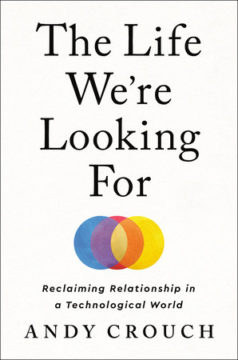 In thinking about technology, three questions are fundamental. What is technology for? What are we for? And how is our answer to the first question related to our answer to the second?
In thinking about technology, three questions are fundamental. What is technology for? What are we for? And how is our answer to the first question related to our answer to the second?
Since the Enlightenment, we have come to take for granted that there really is no relation, because we cannot publicly agree on what humans are for. We can answer that question only privately. But technology is public, not private. We create it for common use, ostensibly in the service of the common good. If we cannot broadly agree on what we are for, then how can we reason together about what our technology is for?
It appears that we cannot. While the question about human purpose is now cordoned off from public debate, the question about the purpose of technology has vanished altogether. We no longer ask why we are making the latest widget. Its existence is self-justifying.
More here.
In Rural India, Extreme Covid Vaccine Hesitancy
Puja Changoiwala in Undark:
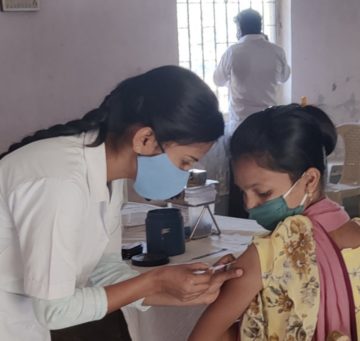 The health workers try to explain to Dolhare that his relative succumbed to Covid-19, and that he, too, should be inoculated to protect himself from infection. “But how will I get corona if it doesn’t exist?” he asks, repeating the false claim.
The health workers try to explain to Dolhare that his relative succumbed to Covid-19, and that he, too, should be inoculated to protect himself from infection. “But how will I get corona if it doesn’t exist?” he asks, repeating the false claim.
The tribal belt where Shivpada lies spans 16 villages, says medical officer Yogesh Pawar, and Covid-19 vaccination rates are low across the region: He estimates that 82 percent of the population hasn’t had a single shot. This is in stark contrast to India as a whole, where 73 percent have received at least one dose. In October 2021, Prime Minister Narendra Modi took to Twitter announcing the administration of one billion vaccine doses in a nation of 1.4 billion people. Amid allegations of manipulations in vaccination figures, the official number of doses administered stands at more than 1.87 billion today. The coverage, however, faces a deep urban-rural gap. The situation is especially stark in the tribal-dominated districts of rural India, where Covid-19 vaccination coverage is the lowest.
More here.

 Homo sapiens have big brains. We use those brains to develop new technologies, which enable us to produce more stuff and support larger populations on the same amount of land. Higher population density makes possible greater specialization and increases demand for innovation. As a result, cultural attributes that favor education and innovation become more valuable, so families with those attributes are more likely to reproduce, resulting in a population that is more favorable for further technological development.
Homo sapiens have big brains. We use those brains to develop new technologies, which enable us to produce more stuff and support larger populations on the same amount of land. Higher population density makes possible greater specialization and increases demand for innovation. As a result, cultural attributes that favor education and innovation become more valuable, so families with those attributes are more likely to reproduce, resulting in a population that is more favorable for further technological development.